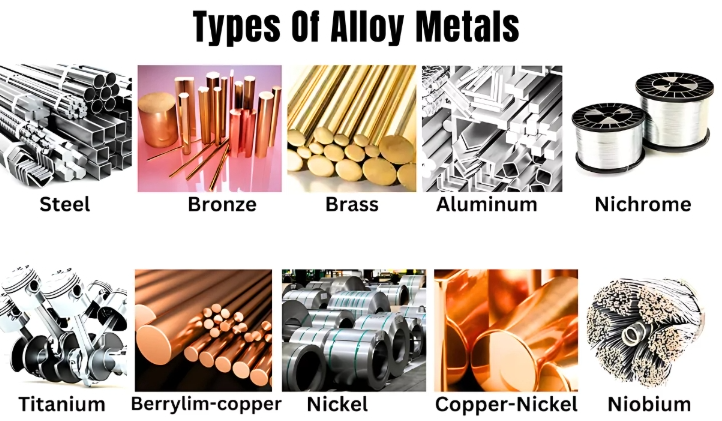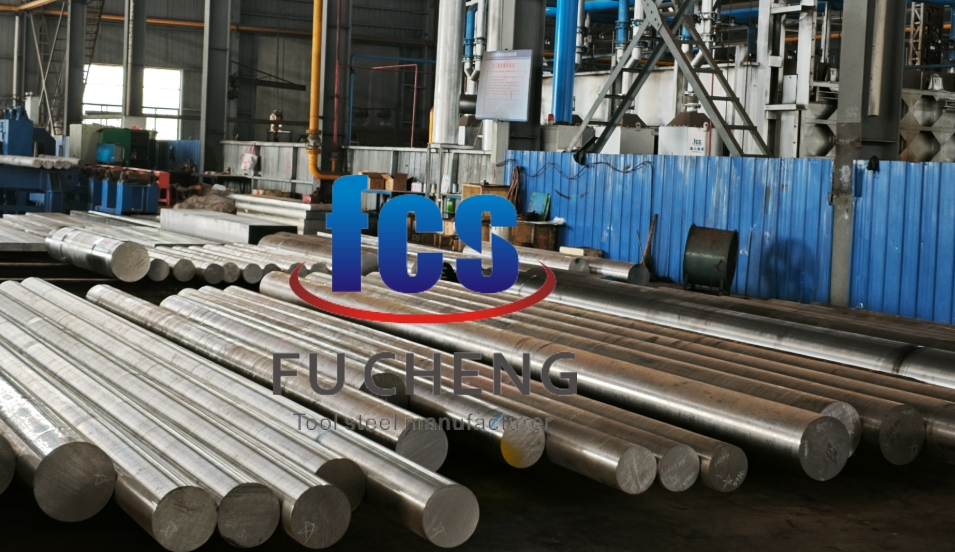Have you ever asked why tool steel costs more than carbon steel? I know I have. At first glance, I think they look alike. Both are strong materials. People rely on them in many industries. But if you look closer, you see important differences. These differences explain the higher price, in my opinion. Tool steel has special alloys. Making it also uses a lot of energy. I believe these factors really set tool steel apart. So, what makes it cost more? And is it a good investment? Let’s look into it.
Higher Alloy Content
I think the higher alloy content in tool steel is a big reason it costs more than carbon steel. Alloying elements really improve how tool steel performs. Let me explain the key factors about its alloy mix and why that affects the cost:
Alloying Elements and Their Proportions
Throughout my career, I’ve become very interested in tool steel. I find the mix of its alloying elements amazing. When I look closely at its makeup, I really admire the added chromium, vanadium, molybdenum, and tungsten. Nickel, cobalt, and manganese are also included. In my view, each element gives the steel a unique strength, working together like instruments in a band. Tool steel gets much larger amounts of these valuable elements than you find in carbon steel. I consider these steels to be fantastic metal creations. When forged the right way, they feel almost alive in my hand.
For example:
M2 tool steel is a common high-speed steel. It contains about 4.5% molybdenum, 5.5% tungsten, and 2.2% vanadium. This makes it a high-alloy material in my view.Some tool steels have tungsten content between 9% to 18%.Chromium-based tool steels can have up to 5% chromium content.In contrast, carbon steels usually have less than 0.35% carbon. They also have very few other alloying elements, like manganese and silicon.
Production Implications
Making tool steel is harder because of the high alloy content. It affects the refining, melting, and heat treatment steps.I believe these steps need advanced technology and special equipment. They also use substantial energy and require expertise. This increases production costs.To sum up, I find the higher alloy content improves tool steel’s mechanical properties. These include hardness, wear resistance, and toughness. It also increases manufacturing costs, which makes tool steel more expensive than carbon steel.
Greater Energy Consumption in Production
Making tool steel uses much more energy than making carbon steel. I think this clearly affects its price. Here are the main reasons I see for this difference:
1.Higher Energy Requirements in Steelmaking.Making steel with a basic oxygen furnace (BOF) uses about(11 \times 10^9) joules per ton. On the other hand, the electric arc furnace (EAF) is common for tool steel. It uses around (2.25 \times 10^9) joules per ton if it uses recycled steel. It seems like a big difference to me.From my understanding, tool steel also needs extra steps that use a lot of energy. These include adding alloys and special heat treatments. This makes energy use go up even more.
2.Energy as a Major Cost Component.Energy makes up 20-40% of the total cost to produce steel. That seems like a large portion to me.For tool steel, I see that using methods that need a lot of heat pushes costs up. These methods include quenching, annealing, and tempering. Also, using alloys like tungsten, cobalt, and molybdenum uses more energy. I believe this increases energy use and overall costs.
3.Cost Differences in Energy Sources.BOF steelmaking mainly uses coal for its energy (89% of the input). I know coal is usually cheaper than electricity.EAF methods for tool steel get about half (50%) of their energy needs from electricity. As I mentioned, electricity costs more than coal. This adds to the higher cost of making tool steel.
4.Process and Environmental Challenges.Making tool steel needs carefully controlled steps. These steps help achieve qualities like hardness and heat resistance. I understand these processes need higher temperatures. They also take longer than making carbon steel.Steel plants have new ways to save energy, like recovery systems. Still, I find that making tool steel is very specific. This customization makes it harder to save energy compared to making large amounts of carbon steel.
In my view, needing so much more energy is a basic reason tool steel costs more to make. Its special features require these energy-heavy processes, unlike carbon steel.
Limited Production Volumes
Another aspect of tool steel’s much higher cost than carbon steel is that less is manufactured.Several factors cause this lower production. I think these include expensive raw materials, special making processes, demand for specific uses only, and limits on where it can be made.
1.Tool Steel Market Size and Growth.The global tool steel market was worth USD 6.64 billion in 2022. Experts project it will grow to USD 13.72 billion by 2030. This is a growth rate (CAGR) of 5.8% to 8.4%. Carbon steel, however, is made in large amounts for many industries. I believe this mass production makes it cheaper.
2.Production Capabilities and Constraints
Tool Steel: Making tool steel needs expensive alloying elements. These include tungsten, molybdenum, vanadium, and cobalt. It also uses special processes like heat treatments. These treatments make the steel harder and last longer. But manufacturers use these expensive processes only for small amounts. This is because only specific applications need tool steel.
Carbon Steel: Carbon steel production, in my view, happens on a much bigger scale. For instance, U.S. raw steel production hit 1,656,000 net tons per week in April 2025. Over 22.5 million tons were produced year-to-date. Producing it in large quantities helps lower the overall cost.
3.Regional Manufacturing Insights
North America: In North America, production is limited. But industries like automotive and aerospace have a strong need for it. Teamwork between big makers increases profits. I find this also keeps tool steel somewhat exclusive.
Asia-Pacific:The Asia-Pacific region is a big manufacturing area. Yet, making tool steel there is difficult. I suggest this is due to the high cost of needed advanced equipment and top-quality alloys.
4.Market Segmentation
Tool steel is mainly used for precision tools. Examples I see include molds, dies, and cutting tools. These tools usually need smaller production amounts. Carbon steel, on the other hand, meets large-scale needs. It’s used in construction, automotive, and general manufacturing.
5.Competitive Market Landscape
Big tool steel makers like Sandvik, Hitachi, and Voestalpine concentrate on specific, high-value markets. This differs from large carbon steel producers. For example, China’s Baowu Group made over 130.8 million tons in a year. In my opinion, this shows a huge difference in production size.
To sum up, I think tool steel production is limited. This is because raw materials are expensive, making it involves complex steps, and it’s only needed for specific uses. This is very different from carbon steel. Carbon steel is made efficiently in large amounts for many general industry needs.
Market Demand and Specific Uses
Growth in the Tool Steel Market
I noted the world’s tool steel market was valued at USD 6.64 billion in 2022. Experts think it will grow to USD 13.72 billion by 2030. That’s a strong average annual growth rate (CAGR) of 8.4%.In 2024, the market size reached USD 7.04 billion. I read forecasts that suggest steady growth. They predict a 5.8% annual growth rate (CAGR), reaching USD 11.69 billion by 2033.From my perspective, the need for strong, accurate, and effective tools drives this growth. This applies to established markets and newer ones too.
Demand Breakdown by Industry
Automotive Industry: This industry uses tool steels often. They make dies, molds, and cutting tools for long-lasting car parts. In 2023, 80.1 million motor vehicles were made worldwide. Based on this, I see the car industry as a major force pushing tool steel demand.
Aerospace and Defense Sectors: These sectors need tool steel for parts requiring high accuracy and heat resistance. Examples include landing gear, actuators, and turbines.
Manufacturing Industries: Factories making electronics, consumer goods, and machines also use tool steel. They need it for molds, dies, and cutting tools. I believe this adds quite a bit to market growth.
Construction Sector: As building projects increase, so does the need for tool steel. Machines and molds used in construction rely on these components.
Regional View of Industrial Demand
North America: In my opinion, North America uses a lot of tool steel. This is because it has large automotive and aerospace sectors. Car production is also growing there, and manufacturing is strong.
Asia-Pacific: This region holds the biggest share of the tool steel market. I think this is due to fast infrastructure development. Plus, car demand is rising in large markets like China and India.
Europe: I observe that Europe works on improving tool steel types. They aim for high-quality production in areas like cutting tools, cars, and aerospace.
Specific Uses for Tool Steel
Automotive: I find tool steels very important for car parts. They are used in engines, body panels, and transmissions. This helps make the parts last longer and perform well.
Mold Making: People often use tool steel to make strong molds. These molds are needed for making plastic items and for die casting. They also offer a surface that polishes well.
Precision Tools: Based on my experience, high-speed tool steels are vital for tools like drills, saws, and gear cutters. They handle heat very well, which is a great benefit.
High-Impact Applications: Certain tool steel types resist shock well. I recommend them for tough jobs using mining equipment, chisels, and air-powered tools. These uses need materials that show great toughness.
Expert Opinion:
“In my view, the market for tool steel is distinct from the carbon steel market. This naturally makes tool steel more expensive. Based on my 25 years working with specialty metals, I’ve found that tool steel buyers value performance over cost. I see them paying 3-5 times more for it. Their jobs require precision and toughness that carbon steel cannot deliver. This is especially true for making things in aerospace and automotive. Tool failure there can stop production lines. The cost can be thousands of dollars per minute. I find it interesting that although the first cost is higher, tool steel wears better. This often results in a lower cost each time it’s used. Because this market is specific, manufacturers focus on quality instead of making large amounts. This also helps keep prices high. From my perspective, it’s more than just the material difference. It involves the unique engineering system designed for these demanding jobs.”
———— Dr. Michael Harrington , Metallurgical Engineer and former Technical Director at Advanced Steel Technologies with 25+ years of experience in specialty alloy development
summary
When I think about the cost difference between tool steel and carbon steel, I know you get what you pay for. Based on my experience, the higher price for tool steel gives you better results. It also lasts much longer. This often makes the extra cost a smart choice, in my view. I’ve worked with these metals for years. I learned that picking the right steel is more than just looking at the price tag. I suggest you match the steel carefully to the job you need it for. Tool steel does cost more at the start. But I find its special qualities, like strength and durability, often give you better value over time.





